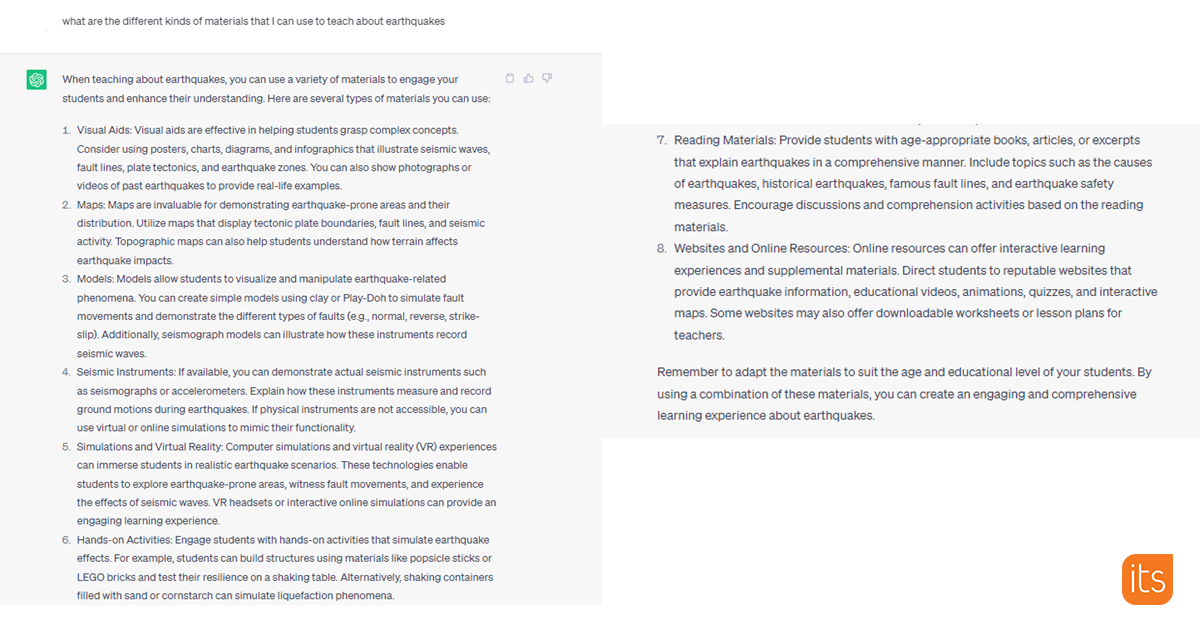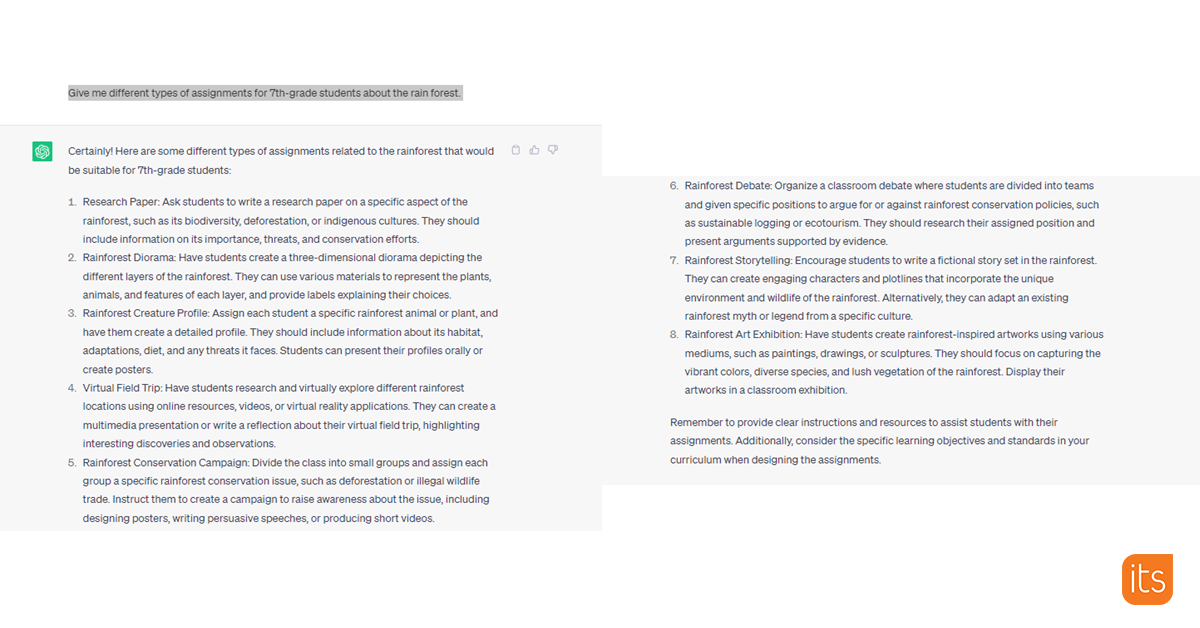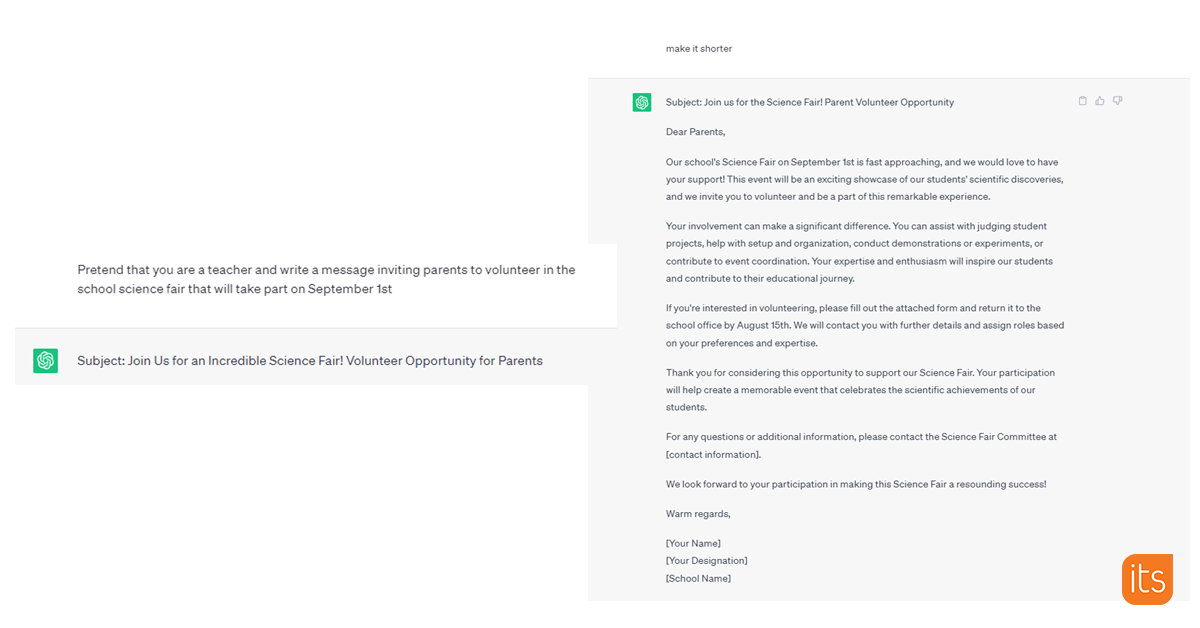AI and ChatGPT have emerged as two of the most actively discussed subjects worldwide in the last year, owing to AI's growing accessibility to the general public. To use AI for a range of tasks, you no longer need to be an expert in computer science or a tech enthusiast?
AI and languages model is taking the modern world and these tools have been already proven that can be very helpful in a variety of tasks. AI can help teachers in saving time and improving the teaching and learning experience.
And if you want to learn more about it but don't know where to begin, we can provide you with some basic but highly valuable suggestions for incorporating AI into your daily tasks.
We asked ChatGPT, owned by OpenAI company, how it works, and here is the answer that we got: “ChatGPT, like other language models based on the GPT architecture, uses a deep learning technique called transformer neural networks to generate human-like text responses. The model is trained on a large dataset of text from the internet, allowing it to learn patterns, relationships, and context within language.”
And another piece of information that the ChatGPT itself gave is that “It's important to note that while ChatGPT can generate impressive responses, it may sometimes produce incorrect or nonsensical answers. It's still a machine learning model and relies on statistical patterns in the training data, so it doesn't have real-world understanding or access to up-to-date information beyond its knowledge cutoff. “
When using ChatGPT, for example, remember to constantly check the references and use this tool to assist you by providing suggestions for future projects.
If you want to learn more about it, watch our Chat GPT & AI in Education webinar and hear from some experts about how AI and language models work.
But how exactly should I use ChatGPT? Basically, you can ask ChatGPT any question or make any request. The intriguing part is that this works as a discussion, and you may ask it to extend, decrease, summarise, or focus on a certain topic under the same theme.
Let's look at 5 different approaches to using ChatGPT
1. Be a source of inspiration to create different materials
You can start using ChatGPT by asking it to create a list of different materials to support the teaching process of a certain topic. You can ask ChatGPT to give you different approaches on a certain matter. This can be used as a starting point
For example: What are three different approaches to teaching the central idea of a text? Or What are the different kinds of materials that I can use to teach about earthquakes?

2. Curate different sources of learning under the same topic
ChatGPT can come with a list of links and other resources. It can be time-consuming to find several different resources to make sure students are having the best understanding. If you ask ChatGPT, it can provide you with links, resources, and books.
For example: behave like a teacher and provide a variety of resources to teach my students about the Roman Empire.

3. Come up with a list of potential assessments
In a diverse classroom, and even teaching methods, it is important to have different types of assessments for different needs. But we also know that being creative all the time is not that easy. ChatGPT can help you to come out with different ideas based on the topic that you are working on.
For example: ask ChatGPT to give you different types of assignments for 7th-grade students about the rainforest, and this is what you will get.

4. Create templates for common tasks such as drafting emails, sending out parent notes, organising school events, and so on
You may ask ChatGPT to write a message and set the tone. For example, request that it produce a statement inviting parents to help at the school science fair. And the best thing is that you may ask to make the message shorter, longer, focus on specific elements, and so on.
Don't forget to add your own personality, but it will undoubtedly save you time.

5. Summarize and organize large sets of data
You can simply copy and paste the information you want and ask ChatGPT to summarize it for you.

Always check the sources & don't share sensitive data
ChatGPT generates data depending on what is accessible online and on patterns. AI will not do the work for you; rather, it is a tool to help you formulate ideas, get insights, and broaden your perspective on specific issues. Don't rely entirely on it; always double-check the facts and sources.
Also, consider the type of information you will include. Don't share with the tool any personal, student or sensitive information. OpenAI not only has access to all of your ChatGPT discussions, but it can also use this information to feed the bot new data. In another words, your information may appear in the prompt results of other users.
However, take your time to experiment and ask for some meal suggestions and weekend activities, for example. Learn how to use it and make the most of what it has to offer.
Visit our page to stay up to date on the the latest Back to School news.